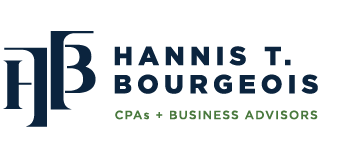Managing your Construction company’s worker’s comp cost
In a physically intensive industry such as construction, injuries happen. For this reason, workers’ compensation insurance has got to play a critical role in your risk management efforts.
From a financial perspective, the challenge is preventing workers’ comp costs from spiraling out of control. Doing so isn’t always easy, but there are ways to keep your construction business — and its workers — on safer ground.
Train continuously
Because of the skilled labor shortage, many construction companies have had to hire inexperienced workers — greatly increasing the risk of accident and injury. Be sure to allocate the time and dedicate the resources to providing thorough safety training to new hires.
But such training shouldn’t be limited to new employees. Top-performing construction companies train continuously, both to keep employees “fresh” when it comes to safety and to update them on new risks or better practices. Among the best ways to do so is to hold “toolbox talks,” open discussions about safety incidents and strategies, as often as possible.
Indeed, you’ve got to regularly review and revise your training to keep up with evolving risks. For example, many construction companies were abruptly forced to add protocols regarding infectious diseases during the pandemic. You also might want to update your training when OSHA rolls out new National Emphasis Programs.
Find ways to support employees
You can reduce workers’ compensation costs by encouraging injured or ill employees to receive immediate and ongoing medical attention appropriate to their conditions. Doing so will help them recover sooner and avoid unnecessary treatment costs.
Don’t leave getting workers back on the job to an ad hoc process. A formal return-to-work (RTW) program will reduce your need to recruit and train replacement workers or pay overtime to employees filling in for those on leave. It also better prepares you to find positions suitable for employees with medical restrictions, so they can rejoin the team in some way as soon as possible.
Above all, a supportive RTW program is good for employee morale and the bottom line. By offering one, you’re demonstrating to your workforce that you’re actively engaged in helping them get and stay healthy.
Create a “culture of safety”
Your construction company’s leadership team must go beyond occasionally mentioning that safety is a priority. Create a culture of safety that starts at the top. Workers notice, for instance, when managers and supervisors don’t follow safety rules themselves or cut corners. They take heed, as well, when you provide top-notch personal protection equipment and not just the bare minimum.
In addition, you should facilitate the easy reporting of incidents, hazards and risky behaviors — perhaps anonymously. It’s critical, though, that you act promptly to address reports and publicize responses so employees know that you’re taking their concerns seriously.
You can increase employees’ investment in safety by giving them a voice. For example, appoint worker representatives to a safety committee and include their input when formulating policies and procedures as well as reviewing accidents and near-misses. You may find employees are aware of risks that managers aren’t.
Monitor your X-Mod
Along with maintaining the highest levels of safety, take a proactive role in the administration of your insurance coverage. Insurers use an experience modification (X-Mod) factor to adjust workers’ comp premiums for construction companies and other types of businesses. It’s based on your actual and expected costs of injuries. If your number is higher than the X-Mod for the industry, you’ll probably have to pay higher premiums.
Your construction company’s factor is typically calculated using data from your business and other sources such as the insurer and, where applicable, third-party payroll service providers. It’s worth double-checking everyone’s numbers to ensure accuracy.
Get all the benefits
There’s no doubt that maintaining a strong safety record can help control workers’ comp costs. But it can pay other benefits as well — not the least of which is drawing job seekers to a construction business with a reputation for taking care of its employees.
Please reach out to us today to talk about this and other ways we can help you and your business succeed.

